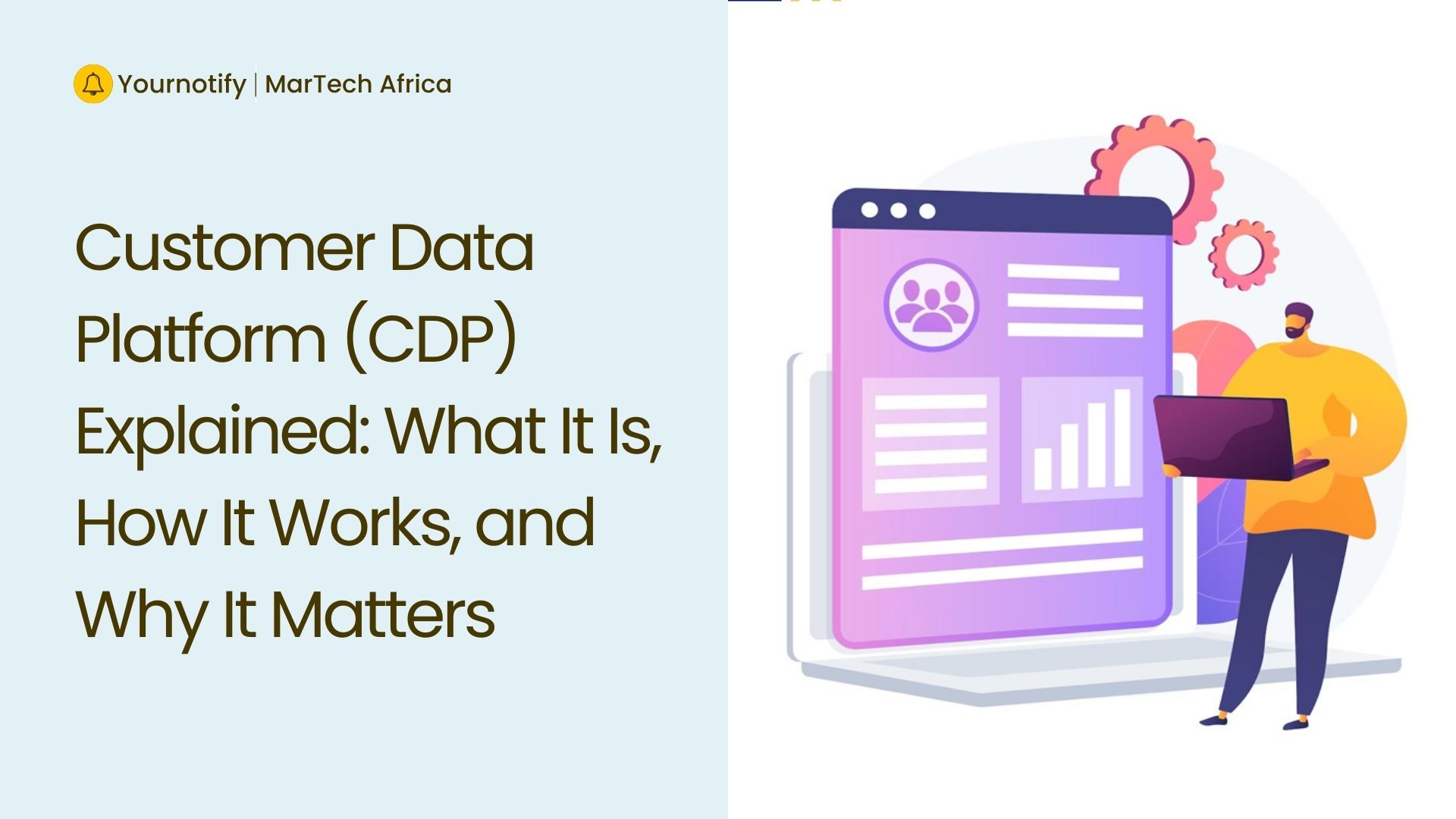In Africa’s rapidly evolving marketplace, legacy brands once stood as cultural icons, commanding deep trust,…

Customer Data Platform (CDP) Explained: What It Is, How It Works, and Why It Matters
In today’s digital-first world, businesses generate and collect more customer data than ever before. Every click, purchase, email interaction, or social media engagement leaves a footprint. Yet, the challenge many organizations face is making sense out of the data they have gathered. That’s where a Customer Data Platform (CDP) comes in.
A CDP helps businesses turn scattered customer information into a single, unified source of truth, enabling smarter marketing, personalized experiences, and better decision-making.
What Is a Customer Data Platform (CDP)?
A Customer Data Platform (CDP) is a type of software that collects, organizes, and unifies customer data from multiple sources into a single, comprehensive profile for each customer. Unlike other data management systems, CDPs are designed to give marketers, sales teams, and customer experience managers direct access to structured, real-time customer insights without heavy IT involvement.
It gathers information from different tools (like CRM, email marketing, websites, mobile apps, and offline transactions), cleans it up, removes duplicates, and merges everything into one central system.
Key Characteristics of a Customer Data Platform
- Unified customer profiles: Combines data from multiple touchpoints (web, mobile, email, POS, social media, etc.) into a single identity.
- Persistent database: Stores data long-term, creating a historical record of customer behavior.
- Accessible to other tools: Shares data with marketing automation, CRM, analytics, and advertising platforms.
- Marketer-friendly: Unlike complex data warehouses, CDPs are built for non-technical users.
How a Customer Data Platform Works
1. Data Collection
The first step in the functioning of a Customer Data Platform is the collection of data from multiple sources. A CDP integrates seamlessly with both online and offline systems to ensure that no customer interaction goes unnoticed.
Online sources include websites, mobile applications, e-commerce platforms, digital advertising, and email marketing campaigns, all of which capture a customer’s digital footprint.
Offline sources such as point-of-sale (POS) systems, loyalty programs, and even call center logs add another layer of valuable information. In addition, many CDPs connect with third-party providers to incorporate demographic data, or external analytics, enriching the dataset further.
2. Data Unification & Identity Resolution
Once the data is collected, the CDP moves to its most critical function which is unifying fragmented information into a single customer view (SCV). Customers often interact with a brand using different identifiers such as personal emails, work emails, phone numbers, cookies, or device IDs, which can result in multiple, disconnected records.
The CDP solves this by applying identity resolution techniques that match and merge these identifiers, removing duplicates and inconsistencies along the way.
This process creates what is often called a “golden record”, a reliable and complete profile of the customer with all relevant details in one place.
3. Data Enrichment
After the data has been unified, the CDP doesn’t just stop at basic information. It enhances each profile with richer attributes to make it more useful. This enrichment process can include demographic information like age, gender, and location, as well as behavioral data such as the number of pages viewed, purchase history, or engagement frequency.
Advanced CDPs also use predictive modeling to estimate future behaviors such as the likelihood of churn, the probability of a repeat purchase, or a customer’s affinity for certain products. By enriching profiles with both descriptive and predictive insights, businesses gain a deeper understanding of their customers.
This transforms raw data into actionable intelligence that can directly influence marketing strategies and customer experience initiatives.
4. Segmentation & Audience Building
Once customer profiles are unified and enriched, the CDP allows marketers to group them into dynamic segments based on shared characteristics or behaviors.
Segmentation can range from identifying high-value customers who consistently make purchases or isolating first-time buyers who need nurturing. It can also highlight frequent website visitors who browse often but never complete a purchase.
The strength of CDP-driven segmentation lies in its dynamism. These audience groups update automatically as new data flows in, ensuring that businesses always target customers with the most up-to-date information.
The segments can then be used to run highly targeted campaigns across channels such as email, SMS, paid advertising, or mobile push notifications, dramatically improving relevance and engagement rates.
5. Activation
The final step in the CDP process is activation, which means making the data available across different business tools so it can be acted upon. Once unified, enriched, and segmented, customer data is pushed into platforms where it can drive real-world outcomes.
For example, detailed profiles can be shared with a Customer Relationship Management (CRM) system to empower sales teams with deeper insights. Marketing automation tools can use the data to trigger personalized campaigns that reflect each customer’s journey.
Advertising platforms can build lookalike audiences based on high-value customer segments, and analytics dashboards can provide performance measurement rooted in accurate, unified data.
Why a Customer Data Platform Matters
1. Personalized Customer Experiences
A CDP makes personalization possible by ensuring every touchpoint. These could be in areas like emails, ads, or recommendations that reflects the customer’s unique history and preferences.
2. Eliminates Data Silos
Many businesses struggle with data stored in disconnected systems. A CDP breaks down silos by consolidating everything into one platform, making data more usable.
3. Improved Marketing ROI
By targeting the right audience with the right message, businesses waste less budget on irrelevant ads or campaigns. For example, instead of sending a blanket promotion, a retail brand can target only frequent buyers of sportswear with athletic gear discounts.
4. Supports Compliance and Privacy
With regulations like GDPR and CCPA, businesses need to manage consent and protect customer data. Many CDPs include built-in features for data governance, making compliance easier.
5. Better Customer Retention
By analyzing behavior and predicting churn, a CDP helps businesses proactively engage at-risk customers with loyalty programs or special offers.
6. Empowers Marketing Teams
Unlike traditional data warehouses that require IT intervention, CDPs are built with user-friendly dashboards and tools. This gives marketers direct access to insights without delays.
Conclusion
In an era where customer experience is a competitive differentiator, businesses can’t afford to rely on fragmented data. A Customer Data Platform (CDP) ensures that every marketing, sales, and service decision is backed by a complete, accurate understanding of the customer.
Related Content


